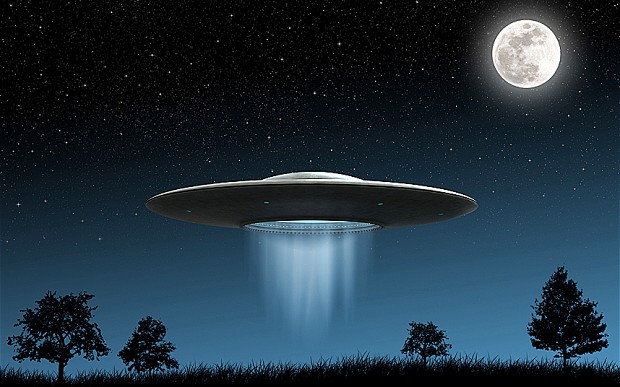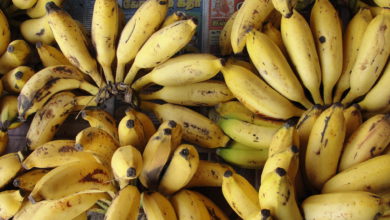Quickies
Skepchick Quickies 4.17

On this day in 1897, the Aurora UFO Incident (in Texas) occurred. Surprise ending: the story is most likely a hoax. In a related story, “UFO enthusiasts admit the truth may not be out there after all.”
- My lucky day: the view from mile 22 – One woman’s account of the kindness of people after the Boston Marathon explosions. From The Edge.
- 5 Basic Facts of Life (Were Made Up by Marketing Campaigns) – From Veronica.
- To Attract More Girls to STEM, Bring More Storytelling to Science – Also, more experiments should involve glitter and the color pink. What’s your opinion of this article? From Michael.
- The Case for Teaching Kids ‘Vagina,’ ‘Penis,’ and ‘Vulva’ – Hell, even some adults don’t even know what a vulva is.
- “We’re the No. 1 Threat to Women!”: The feminist comedy of Louis C.K. – I can’t think of what to say, I’m too happy. From nowoo.
BONUS: A little Todd Rundgren to start your day with.





Regarding the “#5 Basic Facts of Life (Were Made Up by Marketing Campaigns)”:
The whole perfume industry, which goes back at least to ancient Egypt, was all about body odour. I don’t think one can claim that people didn’t dislike natural body odour before the 20th century – they hated it, and tried to cover it up. Figuring out a way to prevent body odour (by preventing sweating) was more a matter of teaching people that being *scentless* is desirable.
And women shaving? I don’t know about legs and armpit hair, but Aristophanes (Greek comic playwright from the 5th century BCE) makes many references to women plucking and singeing off their pubic hair to make them look less bushy. My guess is that, as long as desirability has been associated with extreme youth (and women in Aristophanes’ day were married as young as 12) comparative hairlessness has been sought as a beauty method.
But it is marketing that told women they need to spend more for ladies’ razors to do the shaving with. Can’t have a man’s tool anywhere near our bodies. We have to use 4x expensive women’s formula deodorant because our stink is extra special and our sweat is some boss level.
My very favorite “fact of life (made up by Marketing)” is “an apple a day keeps the doctor away.” According to Michael Pollan in “Botany of Desire” this line was invented by a couple of guys who had a large plant nursery business in Mississippi in the late 1800s. At the time, America’s drinking habits were shifting from hard cider (the long time staple use of apples) to beer. Also, the temperance movement was gaining steam, so people were drinking less. These fellows were major purveyors of apple trees, per Pollan having “discovered” the Golden Delicious and Red Delicious apples. To keep up sells of Apple trees, they came up with this notion to get people to buy more eating apples.
Funny, I was told as a child that it was intended to get people to eat fruit in order to keep them from developing scurvy because so much of what people ate was a meat and bread based diet and unlike other fruit, apples keep well overwinter.
So the storytelling to science article has me doing some thinking. It’s not a bad idea but I don’t think it’s a failing of science per say that stories aren’t told (and the author focuses on a very narrow definition of story). I feel like most of my work tells stories, not only the obvious ones about the cases that I study but also what these cases highlight at the higher social science level. However, I had to start my PhD before that became possible for me. The way we approach science and technology education tends to be very manufacturing line-like. You aren’t told why you are dissecting this earthworm or how it will connect to your other areas of study, etc. Students aren’t told that their chem lab report should tell the story of their unique experiment to the instructor, they’re simply told do this and do it right or you won’t pass. That kind of drudgery creates an image of what it’s like to be a scientist, and needless to say, it’s not an exciting one. When you compare it to the other career option students see in schools all the time (education) they can at least see the good side, the unique side, the interesting side to such a profession even if they also see the more negative aspects. Science, math and technology don’t ever have that experience.
I love storytelling (seeing as that’s what I do for a living), and I think it can help teaching in all sorts of ways, but I don’t think I’ll ever get over the condescension inherent in making STEM less STEM-ey to fit a female audience. It’s like in DIY, where there’s a tendency to push women toward soft circuitry (it’s like electronics with sewing!). Girls are smart. We can tell when we’re being coddled, and we know that if you’re assumed to need special help, you aren’t likely to rise to a high level of achievement.
To the editors of the Herald-Bugle,
I am the sole teacher in our town’s one-room schoolhouse. Of course, as a respectable educator, I primarily use the time-honored approach of having my students endlessly copy passages from the Bible word for word in their best cursive while I patrol the aisles and smack them with a good, supple switch when their attention falters. I have had great success with this method, with most of my students attending and nearly completing the sixth grade before their 15th year. Our town has even produced two doctors: the famed eugenicist Dr. Bradford Wallace and the most esteemed theologian Dr. Henry Clark.
Of late, there has been much talk of replacing our hallowed traditions with new methods of instruction that emphasize deeper involvement with the material and de-emphasize the critical role of rote memorization. I cannot stress my disagreement enough. Instructing students using methods that have been successfully shown to lead to greater understanding and retention of the material will only coddle them, leaving them ill-prepared for the rigors of adult life. It is vitally important that we continue to educate using the existing methods so that students who possess the most innate talent and inherent virtue rise to the tops of their classes. As an amateur phrenologist, I feel confident in saying that my best students always succeed because their skulls reveal them to be the most moral and intelligent of our species. The students who fail do so because they are hopeless cases, invariably possessing the sloped forehead common to criminals, degenerates, and sexual deviants. Catering to those who cannot succeed in the current atmosphere will only do us all a disservice over time.
The self-declared “experts” on education have made much of the potential benefit of these new methods to the savage races, most especially the Negroe, the Chinee, and the Irishman. But if the recent fads of “equality” are to mean anything, is it not the responsibility of the less civilized races to rise to the challenge of learning provided by our White ancestors of superior intellect? Certainly, no educator would doubt that our Anglican tradition represents the high water mark of sophistication and accomplishment. It would be condescending of us to adapt our methods of instruction to those who claim to be our equals, just because some so-called “studies” performed by Papists at East-coast universities purport to have shown that they are more effective.
Struggle and toil are the essence of learning. Students who find their educations interesting or, worse, pleasurable will never learn the critical importance of Christ-like suffering for the soul of Man. Educational strategies that are accessible to even the Hindoo or the Mooslem reveal their failure through their very success. Students who are educated in this manner will never rise to the high level of achievement of Drs. Wallace or Clark. It is vitally important that we stubbornly persist in the current methods and eschew all temptation to experiment, despite any and all identifiable flaws or weaknesses.
Sincerely,
Rev. John H. Smith
I just can’t get behind Louis CK. Those are some good points he’s bringing up, and I’m glad he is. But I don’t want to praise him for being a Good Ally; that’s not what it’s about. Melissa from Shakesville has more (this entry is a year-ish old): http://www.shakesville.com/2012/07/nope.html
I’ve been saying for years that science classes at the high school level should incorporate more storytelling, not because it will help girls but because that is how I, a dude with dude parts, learn. I disagree with those who call this approach condescending or coddling. It’s just a different approach to the material, and in my opinion actually helps to teach some aspects of the material that are hard to teach in other ways. Do girls have a greater tendency to be more comfortable with this approach? Maybe. But it doesn’t take a statistician to point out that it’s never going to be a hard and fast rule.
When I learned biology, my teacher approached the material in a way that spoke to me better than any science class since. We started with five theories on the origin of life (three were abiogenesis, panspermia, and special creation; I have forgotten the other two). Then, remarkably, we started the next unit (on evolution) with a default assumption of creationism! Why? Because that was the default assumption of the natural philosophers who laid the brickwork for modern biology. We then learned how the theory of creation was buffeted on all sides as naturalists asked tougher and tougher questions, and employed more rigorous methods, and showed over time that the biblical account was simply untenable with the evidence. The result was an epic story of the fall of one theory and its gradual replacement by a more robust one that better explained the evidence.
When I describe this hybrid history/science approach to STEM types, they have tendency to tell me I had a bad teacher who wasted our time. They see it as wasteful that, in addition to Darwin, Mendel, and Lucy, we also learned about Lamarck, Haeckel, and Piltdown Man. I disagree, because if we had simply been taught a litany of facts about the natural world, I might have felt like it was interesting but I would have been lost most of the time. Placing scientific advances in the context of their time helped me see a logical progression of knowledge. Despite being a straight A student in chemistry, today I remember virtually nothing. I was bored and confused most of the time, but I could regurgitate the right answers on the test so I did very well despite never actually understanding or retaining anything.
Teaching science as a narrative is not only a matter of preference. I think that it changes the emphasis of what is taught. Like the author of that article says, it helps teach students to think like biologists, because you learn that science is not just facts about the natural world but rather a process that humans engage with. I think it helps you learn that when you learn so-called scientific facts, you’re not learning literal fundamental truths about the universe but rather the best answer we have at this moment to a specific question – a question somebody had to think to ask and then try their best to answer, without any guidance that they were looking in the right place, or even asking the right question.
Of course there are drawbacks, as there always will be. My STEM-oriented friends who think my biology teacher was an idiot would have been bored out of their skulls. Learning the narrative of science inevitably eats into the amount of time you have to teach actual facts and formulae. Teaching any history with the goal of leading students to the “correct” conclusion risks sounding like a “just so” story, which is a disservice to both history and science. I have some ideas about how to address these problems, but ultimately every teaching strategy will have weaknesses and strengths. I believe the strengths of this approach to science outweigh its weaknesses, at least for myself and people like me.
I don’t think it’s worthwhile to get hung up on the hypothesis that this approach might appeal more to girls. Even if it does help to equalize the gender imbalance by attracting more girls to STEM fields, that doesn’t actually prove anything about the inherent nature of girls and boys. We know that girls are treated differently from the moment they are born. Why shouldn’t that tend to lead to a difference in preferred learning strategies for girls and boys? Stranger things have happened in the human brain. In any event, nobody is talking about having a “girl’s science” and a “boy’s science.” We’re just talking about teaching science in a different way, a way that (at least for people like me) vastly improves our retention and understanding of the material.
In my high school, all science courses were ranked. There was “Biology 1,” which was for the smart kids, Biology 2 for the regular kids, and Biology 3 and 4 for the dumb ones. I would propose that we ditch this ranking and instead offer at least two biology classes that are equally respectable but focus on different approaches to the material. One of these could be that hard and fast approach that so appeals to my STEM-oriented friends. The other could be a kind of hybrid between science and history that not only teaches the facts, but orients them in history and context. My school taught history and literature in this way. And if you doubt that scientific knowledge is shaped by its time in a similar manner that literature is, consider that humans have probably been asking why a duck’s penis is shaped all screwy since the dawn of time, yet it wasn’t until the 21st century that anybody thought to look at a duck’s vagina for the answer.